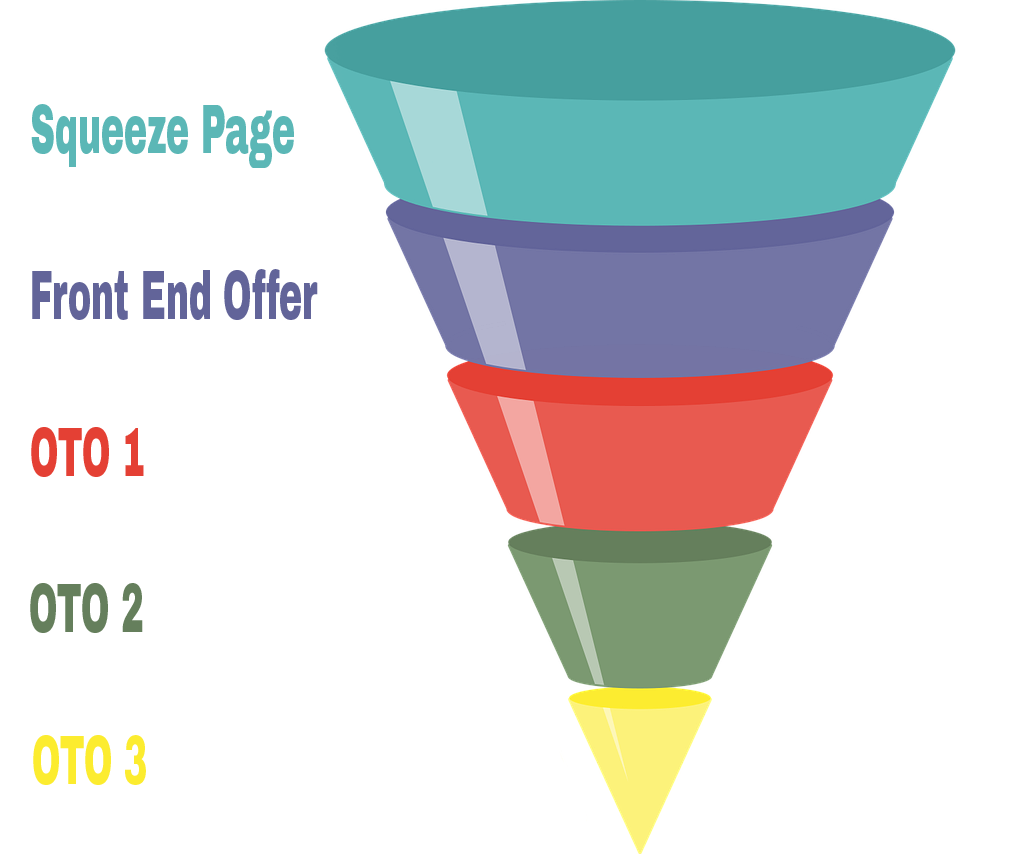Planning Your Sales Funnel
You’ve worked hard to create your product and now you need to work hard to sell your product. One of the most important things you can do to earn more money with your products is set up a great and well-thought-out sales funnel.
A sales funnel is the process you lead your customers or potential customers through. It starts off by capturing their attention, developing relationships, using the psychology of sales, guiding them to buy with a call to action, and then possibly presenting a potential series of upsells and/or downsells.
A sales funnel should ideally represent your “value ladder” of products or services. A value ladder is the full range of products or services you offer starting from the introductory product all the way up to your flagship product or high ticket offer.
The sales funnel has two purposes. The first and primary objective is to show prospects exactly what you can help them with and how you’re going to do that.
The second is to provide those who are ready, able and willing to invest in your products the opportunity to do so.
Not everyone who enters a sales funnel buys on their first visit. Statistical studies conducted over the years repeatedly show prospects can visit a site as many as 10 times before making a purchase.
The primary reason is that a prospect may be ready and willing to make the purchase, but for whatever reason budget, time constraints, you name it they are not able at that moment.
There are many different ways to create sales funnels, of course. It might be the case that you want to send people directly to your sales page instead of creating a full sales funnel. That may or may not work for the product you are promoting.
Or, maybe you want to direct people to a squeeze page, get them on your list, and then direct them to a sales page.

Maybe you want to direct people to a sales page and then present them with an upsell. Or, maybe you don’t want to do an upsell at all.
What I’m going to present you with today isn’t a strict rulebook on how to plan a sales funnel. But, I am going to present you with a variety of different options so you can choose what will work for you.
I do urge you to test different things. You’d be surprised at how many more sales you can make once you get people on your list and develop a relationship with them first. Keep in mind that it often takes a few different times of people seeing your product before they’re ready to go on to purchase it.
If you have a solid sales funnel, you’ll tend to make more sales. You’ll send your own traffic through the sales funnel. Affiliates will also send their traffic through your sales funnel. Obviously, you want to make as many sales as possible and so do your affiliates. That’s why it’s so important to really think about this and try different things, even if you’ve never set up a full sales funnel before.
To Upsell or Not to Upsell…
Before we go any further about the different options, let’s talk about upsells to get that out of the way. There are many differences of opinion when it comes to upsells. An upsell is what you would typically present after someone has purchased your main product.
They already have their credit card out, so you’re presenting them with yet another offer that’s perfectly in line with what they need. I’ll say that again – this upsell offer should be exactly in line with what they’ve already bought. It shouldn’t make them feel like they didn’t get enough of a good product the first time around. It should, however, complement the offer they’ve already purchased.
You can upsell people to higher-end, more premium products, add-ons, personal help, and so on.
In some cases, you won’t have an upsell at all. In other cases, you’ll have just one upsell. In still other cases, you might have a few upsells. Just keep in mind what’s best for your buyers as well as what’s best for you.
By the way, you can also use downsells. Let’s say someone doesn’t take the first upsell you present them. You can then present them with a downsell – generally a less expensive version of the upsell or even of the original product if they didn’t go ahead and buy that.
The idea is that you want them to buy something… Anything. Maybe they didn’t need or want exactly what the first offer was or they weren’t prepared to spend that amount of money.
A downsell can still turn them into a buying customer, but at a lower cost to them. They get to test out your products and hopefully become a lifelong customer. Again, you can present a downsell after they’ve turned down an upsell or you can present a downsell after they’ve turned down buying the original product. Generally, you’ll present the downsell after they turned down an upsell.